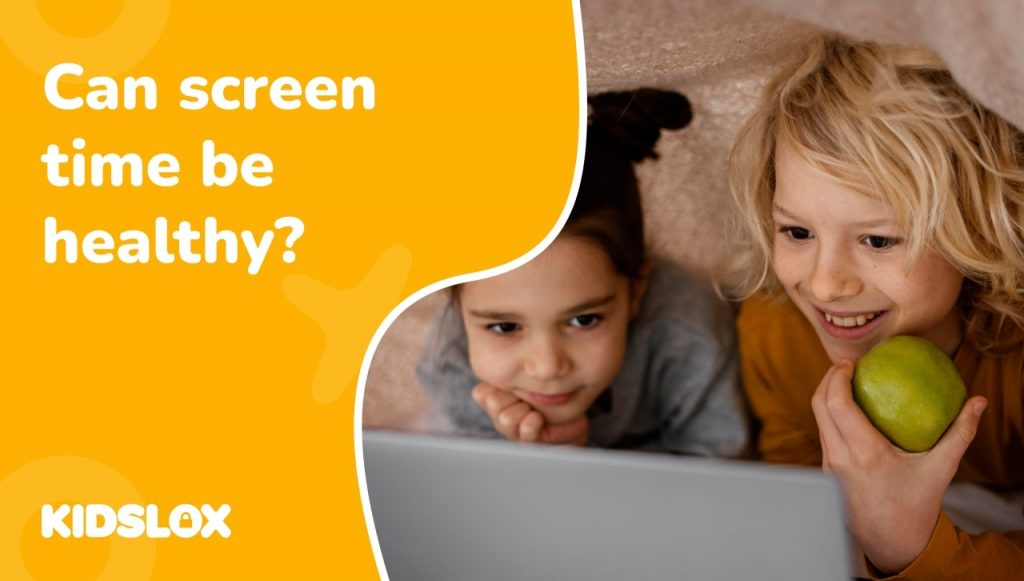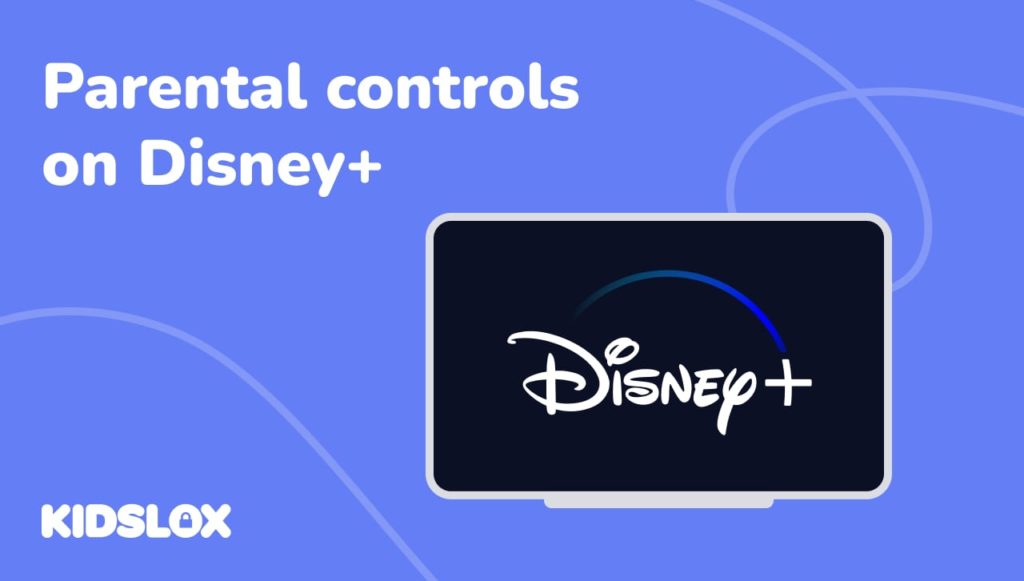Raise your hand if you feel like screens are taking over your life.
Between your phone, tablet, laptop, and TV, you may feel like you can’t escape the screens, and you may have wondered if spending this much time plugged in is detrimental to your physical and mental health.
If you are a parent or guardian, you are likely doubly worried about how much screen time your family is getting each day.
The world is becoming increasingly reliant on technology, so it’s crucial to set boundaries for yourself and your family when it comes to screens. But what if screen time wasn’t entirely bad for you? Can it be used in a healthy way?
The answer is of course, the deeply unsatisfying “it depends”. Yes, there can be such a thing as “healthy” screen time, but to make sure that’s really what it is and that your screen time is serving its full potential, you need to know how to use it correctly and what types of activities are actually beneficial.
Let’s take a closer look at how you can make the most of your screen time – and tips for how parents can begin incorporating healthy screen time into their families’ lives.
Striking A Balance Between Digital and Real Life
We live in a tech-saturated world, with screens a ubiquitous part of our daily lives. And with the rise of remote learning, streaming services, and smartphones, parents are becoming increasingly concerned about the impact these devices have on their kids’ mental and physical health.
In fact, a quarter of parents surveyed in 2022 said they feared their kids spent too much time on devices. So, here’s the crucial question: How much screen time is too much, and what kind is beneficial?
It’s not just about the hours spent in front of a screen; it’s about how those hours impact us. Naturally, developers are creating our digital experiences so they have almost infinite replay value. But this can lead people to spend too much time online or use screens in ways that aren’t necessarily healthy for them.
While adults might be expected to monitor & control their habits, children definitely need guidance to develop their own sense of healthy online and offline behavior. For instance, with the rise of tablets in remote learning, the possibility of children engaging with devices for hours on end is more real than ever.
Healthy screen time begins not with limitations but with an understanding of what a healthy relationship with devices looks like. A vital part of this is recognizing the impact that technology and digital media can have, both positive and negative, on our lives.
Defining Healthy vs Unhealthy Screen Time
In the quest to strike a balance with our digital habits, understanding the difference between healthy and unhealthy screen time is crucial. It’s not just about setting a timer on our devices but rather about the quality of our screen interactions.
Unhealthy Screen Time
Unhealthy screen time typically involves passive engagement, like endless scrolling through social media feeds or binge-watching shows for hours.
Such activities can lead to mental switch-off and a sense of dissatisfaction and even contribute to feelings of isolation. Without breaks for physical activity or social interactions, unhealthy screen time can lead to a sedentary lifestyle and an unhealthy relationship with technology.
Healthy Screen Time
On the other hand, healthy screen time is characterized by active engagement and intentionality. It includes activities like participating in an online course, interacting with friends and family through video calls, or even using apps for meditation and fitness.
These activities not only provide mental stimulation but also help in maintaining social connections and personal growth.
AAP Guidelines for Healthy Screen Use
While there isn’t a one-size-fits-all guideline for screen time from the American Association of Pediatrics (AAP), the focus is on the quality of digital interactions rather than just the quantity.
It’s essential to consider the activities children engage in on digital media and support their use in ways that strengthen social, emotional, cognitive, and identity development.
Evidence suggests that household rules focusing on content, co-viewing, and communication lead to better well-being outcomes compared to those solely focused on screen time limits.
Is Healthy Screen Time Possible? Positive Screen Time Strategies
Strategies for Shared Experiences and Active Engagement
Family Movie or Game Nights:
Want to make sure that your screen time is both fun and social? Make it a family affair! Gather your family together for movie or game nights to enjoy content that is age-appropriate, interactive, and meaningful. You can even use tablets in creative places, such as in a tent in the backyard for some outdoor fun.
Interactive Learning Apps:
There are many apps and websites out there that claim to help your children learn while they have screen time. Don’t just take their word for it though. Look for apps that provide interactive experiences with problem-solving, creative activities, and constructive feedback.
Even when you find good educational apps, don’t rely on the app alone to teach your child; instead, get involved in using the app or game with them and monitor their progress. That way, you help your child learn that screen time can be a shareable experience.
Creative Digital Projects
Encourage children to use screens for creative pursuits like digital art, music composition, or video editing. This fosters creativity and technical skills and is a fun way for them to express themselves. Brands such as Lego and Play-Doh offer digital games that allow children to become creative designers, inventors, and engineers.
Choosing Quality Over Quantity in Screen Time
Educational Programs and Documentaries
Countless shows, programs, and documentaries on streaming services and cable networks can help your child learn new information about the world around them.
When a child’s horizons are expanded beyond what they can see through their backyard, it helps them learn and provides positive cultural and societal perspectives. When there seems to be no choice but screen time, encourage them to watch educational content rather than shows that lack educational value.
Try Virtual Tours and Experiences
Take advantage of virtual tours offered by museums, zoos, or historical sites. Many museums and libraries have interactive websites that allow kids to experience and explore without leaving home.
This can be an excellent way for them to engage with the world around them without too much screen time. Again, consider engaging with the experience together to discuss the new experiences with them.
You could also look for virtual classes or lessons online as a way to supplement your child’s learning. From art classes to tutorials on coding, there are a variety of topics available that can help kids learn something new.
Skill-Building Games and Activities
Screen time is also a great way to encourage your child to engage in social and cognitive skill building activities. By playing games together or competing in online challenges, kids can learn to collaborate with others while sharpening their skills in problem-solving and critical thinking.
Reading Apps
Many devices have reading apps that allow children to engage with written material. By giving kids access to digital books, comics, and other written content, parents can open up a world of learning for their children. There are even apps that make it easier for kids to write stories or create blogs with their friends.
Balancing Screen Time with Daily Life
As you can imagine, knowing how to strike a balance between screen time and daily life is important. While every family situation is unique, there are some tips that can help any family set a healthy balance.
Set Clear Rules and Boundaries for Screen Time
Establish consistent rules about the amount and context of screen time. This includes keeping devices out of bedrooms, setting screen-free zones and times, and implementing device curfews.
A family media plan can be a great tool for aligning media use with family values and establishing a healthy relationship with media. These plans help families decide together how to manage media use and responsibilities. Just make sure everyone agrees on the plan and is willing to follow it.
Avoid Screen Time as a Digital Pacifier
Refrain from using screen time as a reward or punishment. This can set a negative precedent for a child’s relationship with technology. Instead, provide real-life rewards and opportunities to engage in physical activity to help build their confidence, self-control, and problem-solving skills. As screen time is valuable to children, use that desire to engage with technology to your advantage and create learning opportunities.
Encourage Balanced Technology Use
Tech usage should be balanced with other activities such as physical activity, outdoor play, hobbies, reading, creative pursuits, and social interactions. Technical skills may be important for a child’s future success, but so are interpersonal skills like communication, team-building, and problem-solving, which can be developed through a variety of activities.
Choose Appropriate Media and Engage Together
As we mentioned in the strategies above, engaging in screen time together can help remove the isolation that can come with technology use. Use this time to discuss topics related to the media being consumed as well as values and morals from the content.
Encourage Alternative Activities
Engage your children in activities both inside and outside the home. These can include reading, drawing, creative play, sports, or museum trips, which promote social interaction and exploration away from screens. This doesn’t mean you should limit children’s use of technology. Rather, find a balance that works for your family.
Be a Role Model
Perhaps most importantly, set a good example for your children by limiting and monitoring your own screen time. This will not only help get your family on the same page but also signal to your children that you understand their struggles with technology use.
If your children watch you “lose yourself” in your own devices, it could make it seem normal to them when they are engaging with their own devices. Additionally, you can communicate the importance of limiting technology use through conversation and by reinforcing healthy habits.
So Can Screen Time Be Healthy?
Like anything in life, moderation is key. Technology can be a great tool for learning and connecting with others when managed properly – but when it is allowed to consume us, it can create a disconnect from reality.
As a parent or guardian, it is your responsibility to help shepherd your children’s relationship with technology. By creating tech-free times of day, enabling parental controls and moderation apps on their devices, and modeling healthy behaviors yourself – you can help your children create a healthy relationship with screens.
As we continue to navigate our increasingly digital world, reflect on your own screen time habits and those of your family. Are you fostering an environment where screen time is beneficial and balanced? Remember, it’s not necessarily about eliminating screens from our lives but using them in ways that are healthy, constructive, and meaningful.
To effectively implement these strategies and manage screen time, tools like Kidslox can be invaluable.
Kidslox offers a practical solution for setting and monitoring screen time, helping you and your family establish and maintain a healthy relationship with technology. With the right parental control tool, you can monitor device usage and ensure that screen time is used for constructive activities.
So take the time to assess your own relationship with technology and create healthy habits for yourself and your family. With Kidslox, building a balanced digital lifestyle has never been easier – no matter the age of the user.




